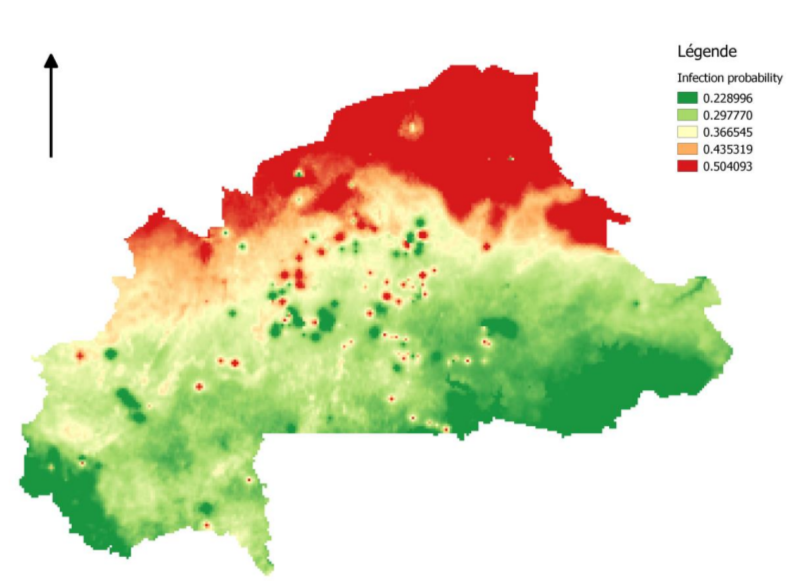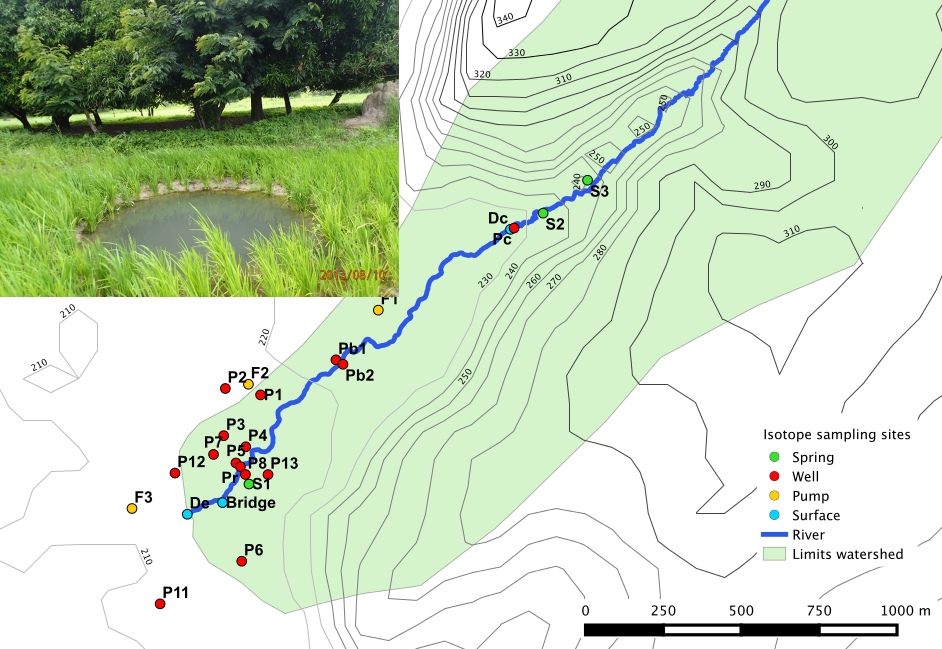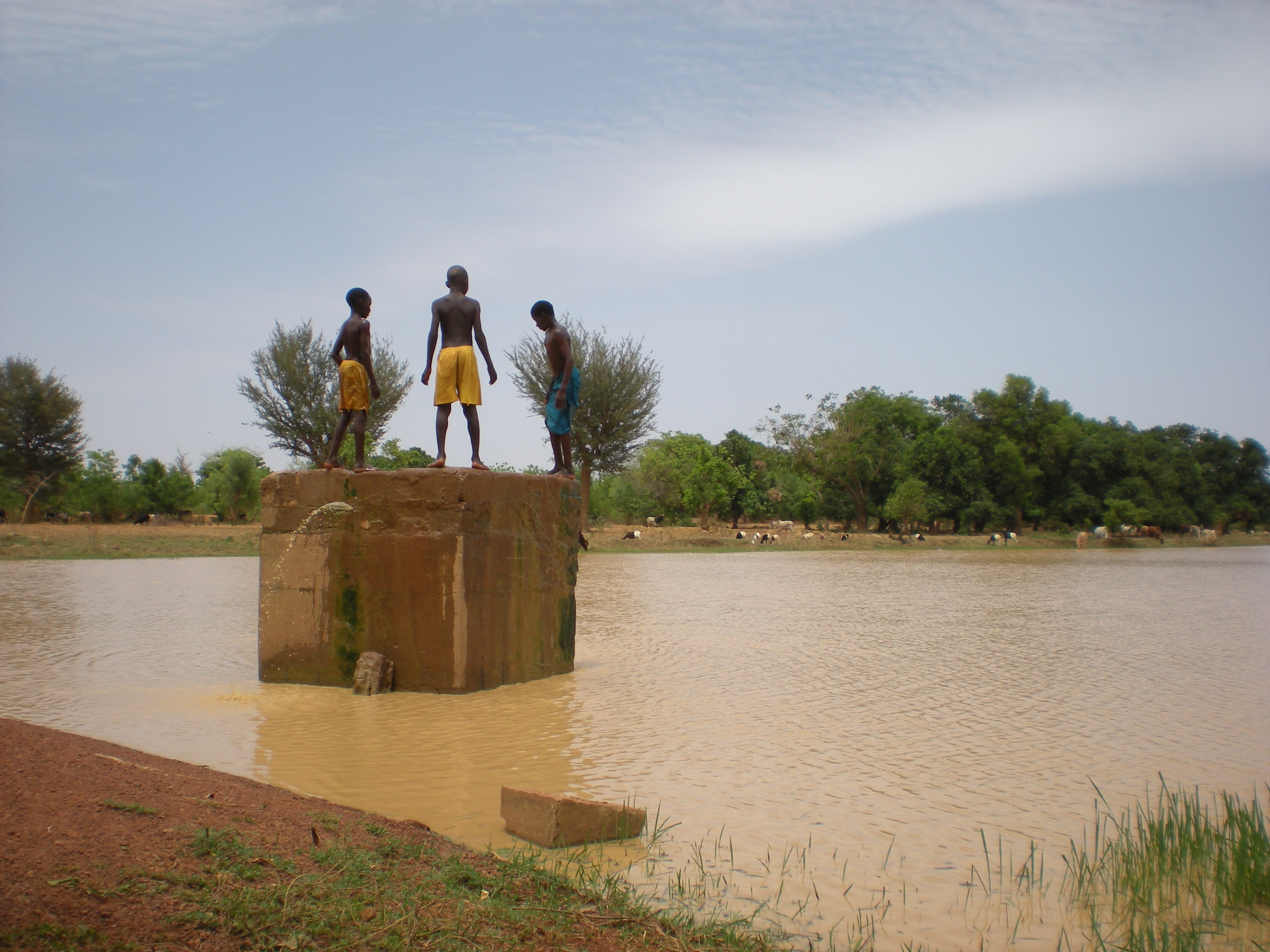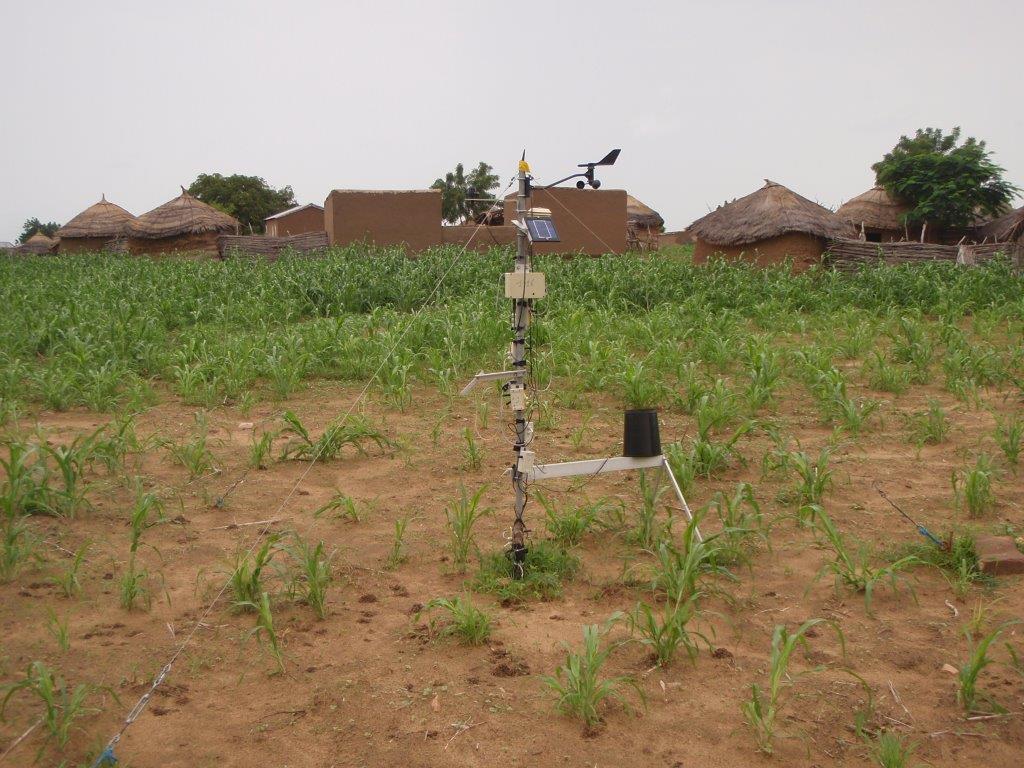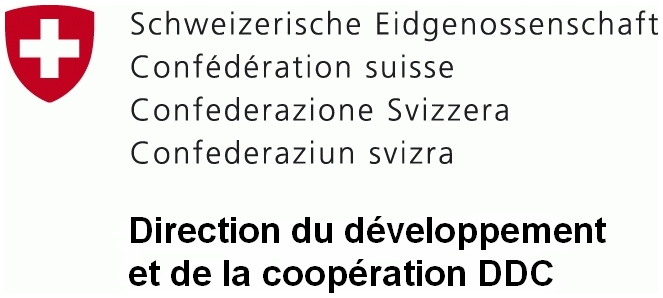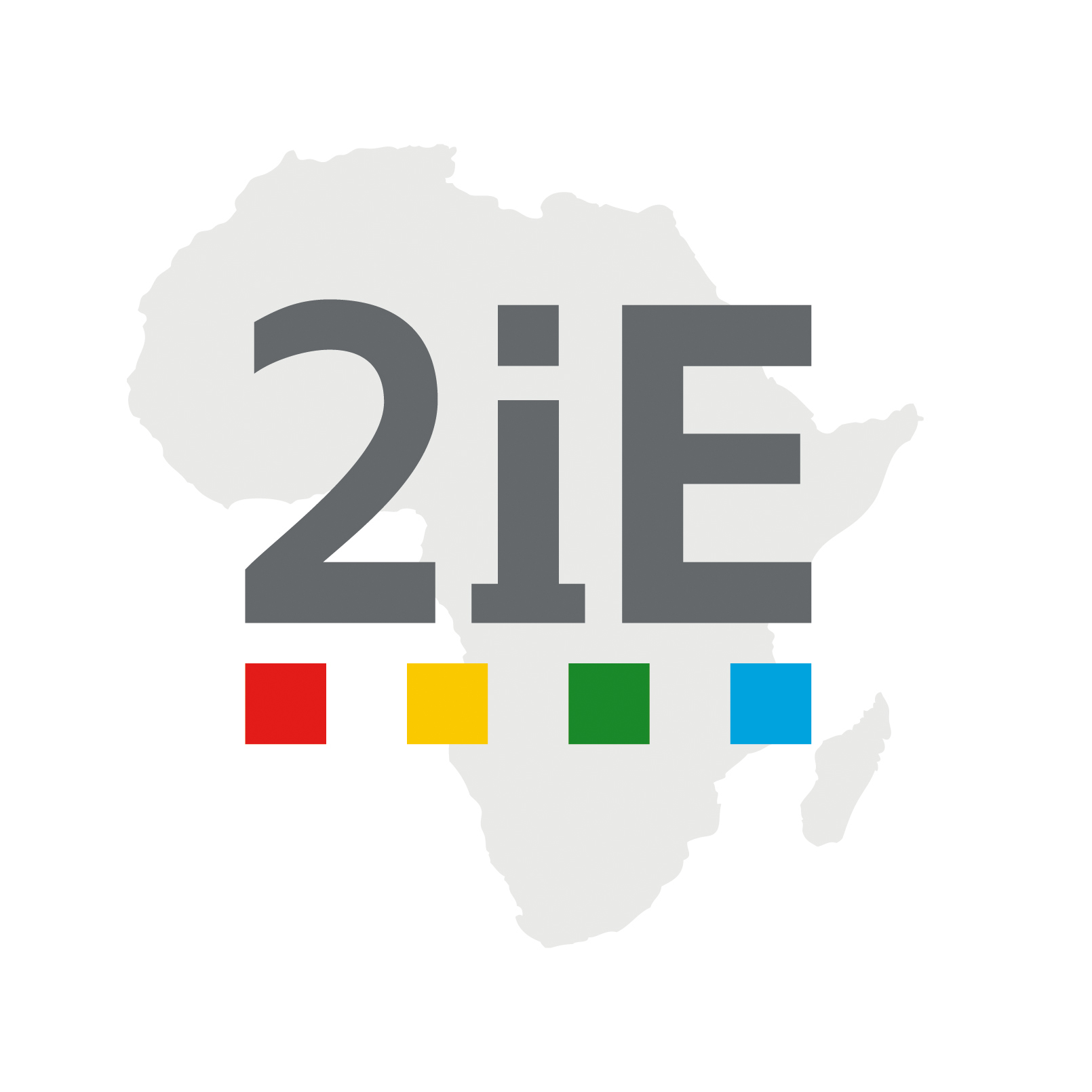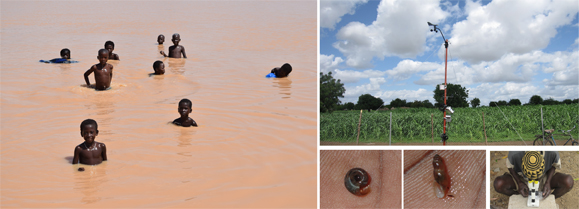
Schistosomiasis, or bilharzia, is a chronic debilitating disease caused by the parasitic worm Schistosoma and affecting an estimated 249 million people around the world in 2012, 93% of which in Sub-Saharian Africa (WHO). Challenges to the successful control of the disease are many-fold due to the complexity of the transmission cycle, which involves a freshwater aquatic snail as an obligate intermediate host and depending on environmental, climatic, ecological and socio-economical factors (see explicative sketch).
In this perspective, grasping the complex dynamics of the transmission cycle in terms of the interplay between its multiple driving factors seems paramount to the design, implementation and monitoring of control programs at the national, regional and local levels. Despite its importance this approach has been lacking in many schistosomiasis-affected countries, and more particularly in the control efforts in Burkina Faso. In the framework of this research project the disease dynamics will be studied through collaborative phd thesis between EPFl and 2iE. As of May 2014 hydrological, parasitological and social data have started to be collected in the main climatic zones of the country in the villages of Tougou (Nord, Sahelian), Liuolgou (Centre-Est, Sudano-sahelian), Panamasso (Ouest, Soudanian) and Tambarga (Sud-Est, Soudano-Sahelian).
Introduction and Context: schistosomiasis and Burkina Faso
The transmission dynamics of schistosomiasis are determined by the complex lifecycle of a blood fluke of the genus Schistosoma responsible for the disease (illustrated and described in the figure hereunder). Its dependency on an aquatic snail (Bulinus and Biomphalaria) as intermediate host and its infection mode by skin penetration in aquatic environments drive the interwoven environmental and climatic factors – which condition the presence, quantity and quality of water necessary to the ecology of both snails an parasites – and socio-economic characteristics of the affected human population – which determine the duration, frequency and location of contamination of water and exposure to that contaminated water – in the persistence of the disease in a given village, region or country.
Burkina Faso is representative of the interplay between environmental, climatic and socio-economic factors at the root of the persistence of the disease in the population nowadays. Indeed schistosomiasis has been recorded in Burkina Faso since the first population surveys in the 50’s with average prevalence as high as 60%. Intensive control efforts based on the distribution of deworming pills were deployed from 2004 to 2008 attaining a significant reduction of prevalence in the monitored villages, but despite these early successes, resurgence has been observed in recent years due to the punctual effect of treatment which does not prevent re-infection. In 2013 more than 2 million people have been estimated to be in need of preventive treatment for schistosomiasis in Burkina Faso alone.
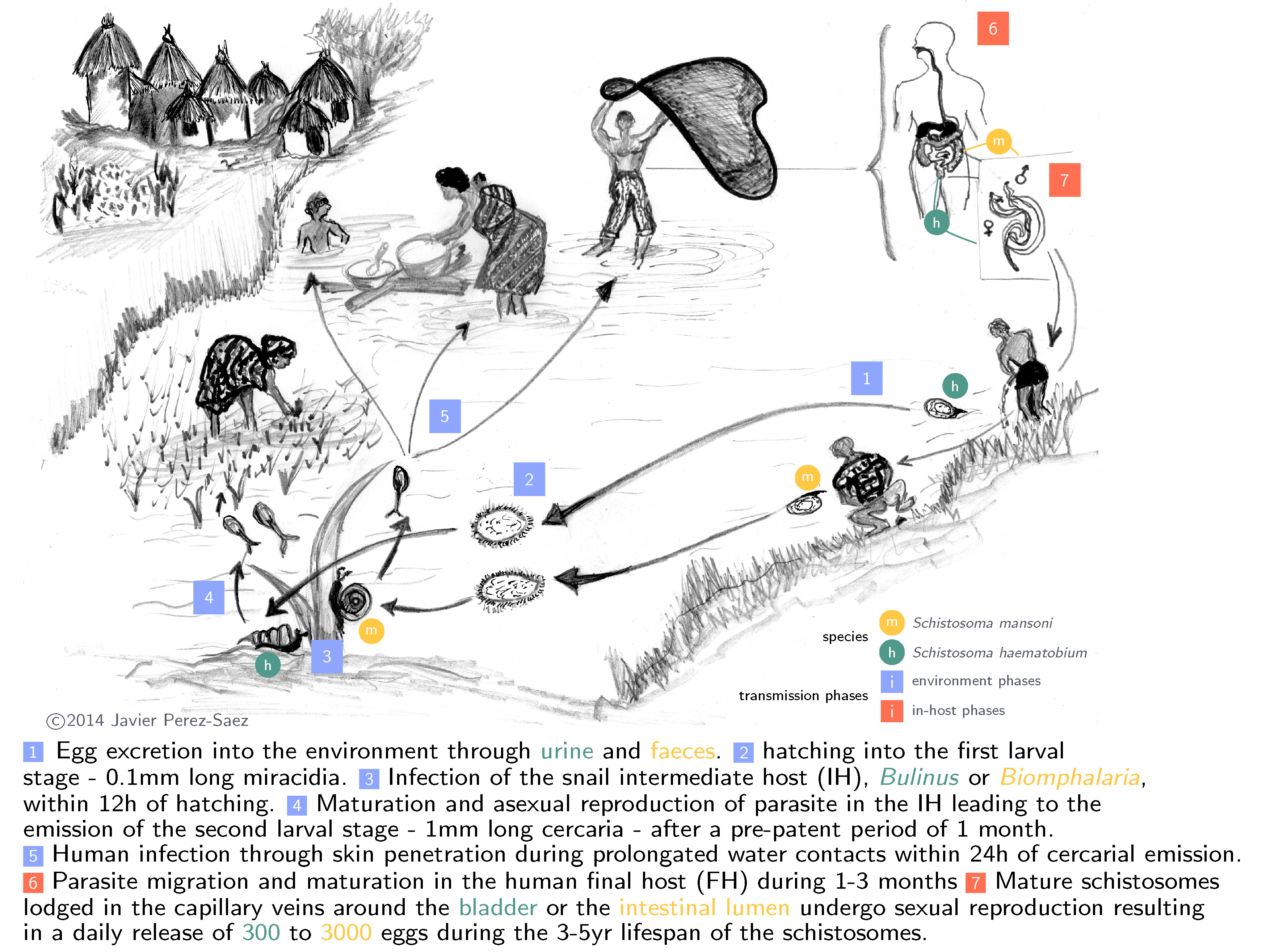
Methodology
The characteristics of the transmission cycle require addressing the different disciplinary dimensions that it encompasses. The methodology that we use reflects this observation by including three facets of schistosomiasis; hydrology, ecology and social. Building on the solid know-how of the ECHO-lab in modeling ecological processes along river networks and the spread of waterborne diseases, the scientific endeavor of this project is to link climatic factors and hydrology to disease transmission through the life cycle of the intermediate host at the local scale using mathematical models (objective 1). These results will be at the same time embedded in the local social context in order to propose adapted solutions to the experimental sites while gathering information from the participatory process key to the understanding of the disease (objective 2). Finally the knowledge produced at the local level will be generalized to the national scale through modeling in the perspective of producing decision support tools for prediction and control of schistosomiasis (objective 3).
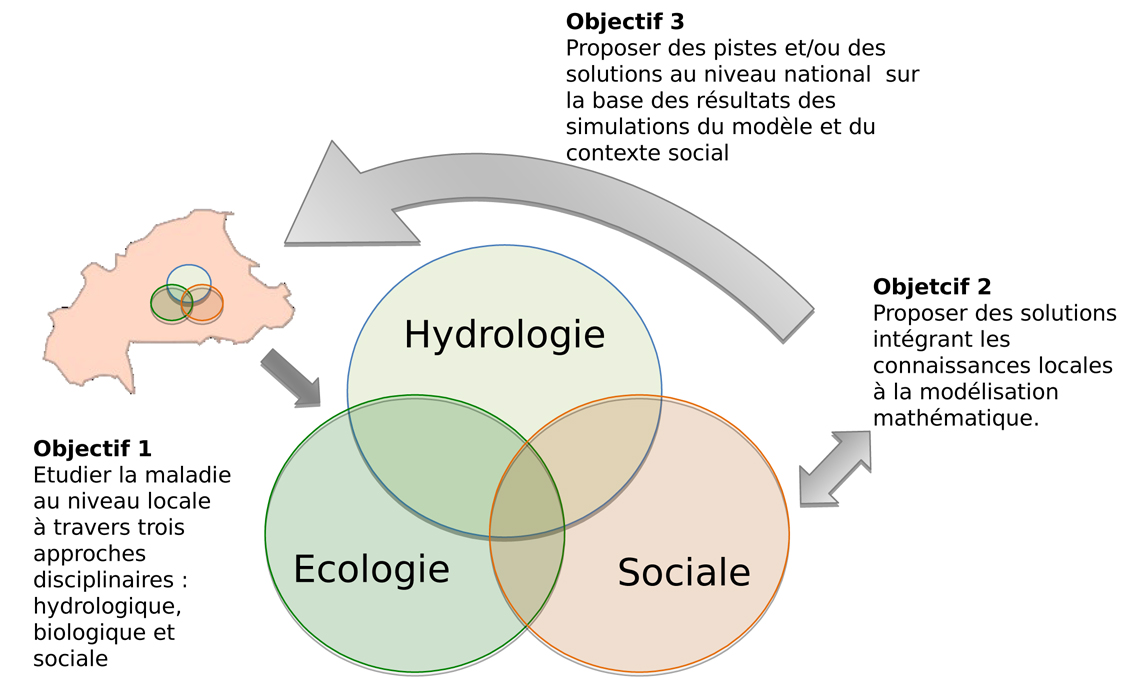
Relevant publications:
- A Theoretical Analysis of the Geography of Schistosomiasis in Burkina Faso Highlights the Roles of Human Mobility and Water Resources Development in Disease Transmission
- Hydrology and density feedbacks control the ecology of intermediate hosts of schistosomiasis across habitats in seasonal climates
Completed Master’s Projects
|
|
|
area in Burkina Faso |
Contact person(s) : PhD : F-J. Perez-Saez— N. Ceperley — Th.Mande— J-M. Fröhlich — Prof. A. Rinaldo
